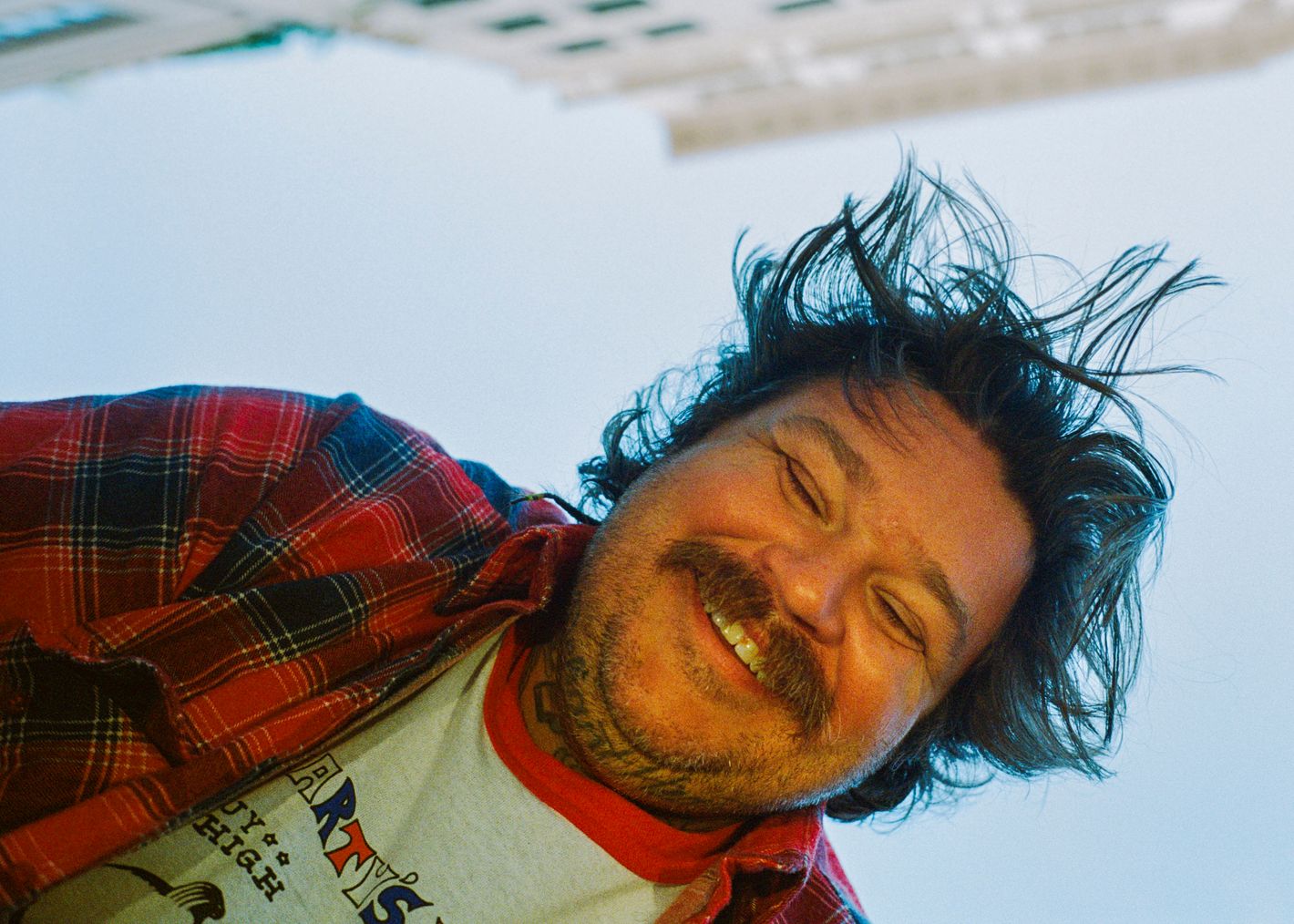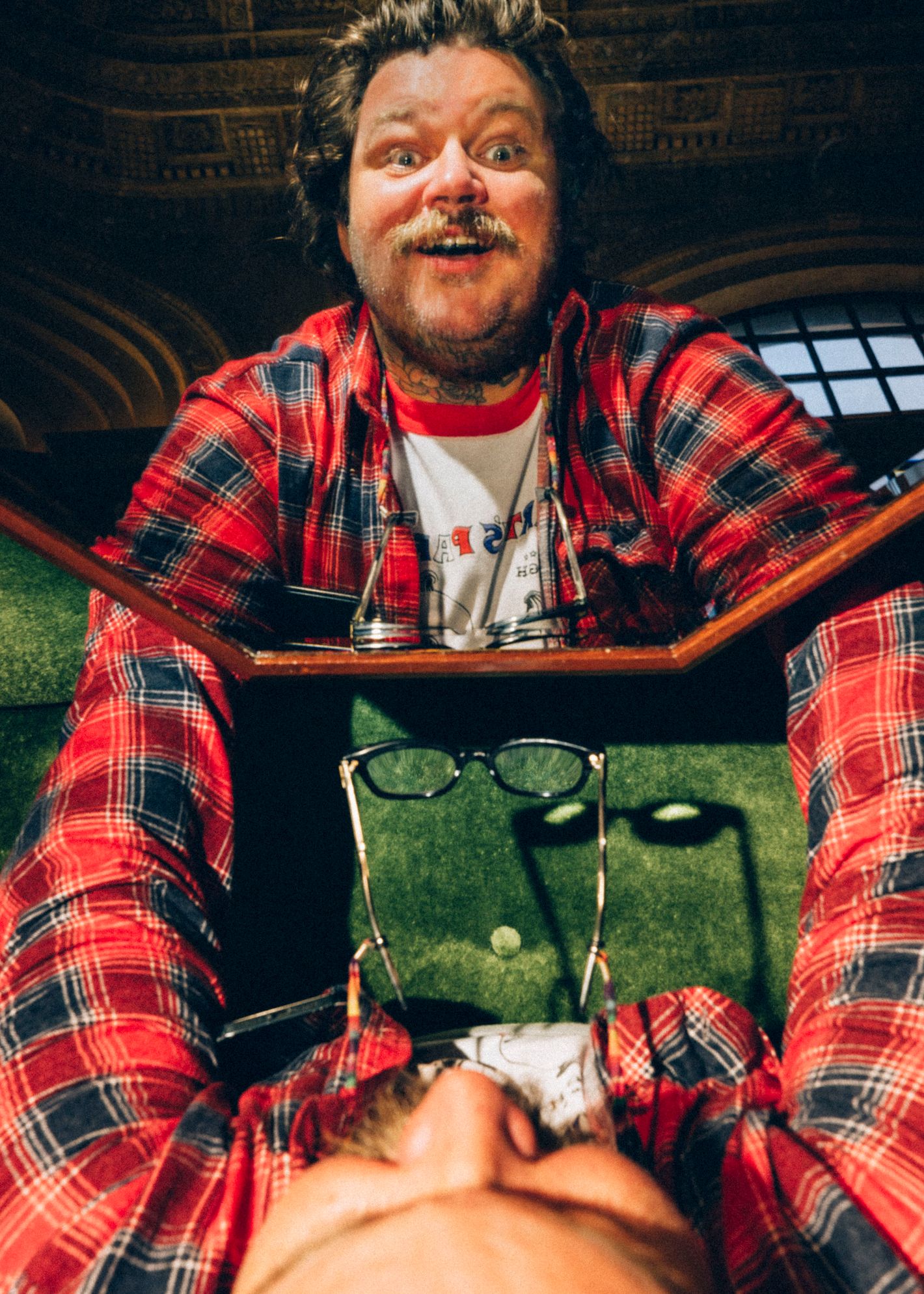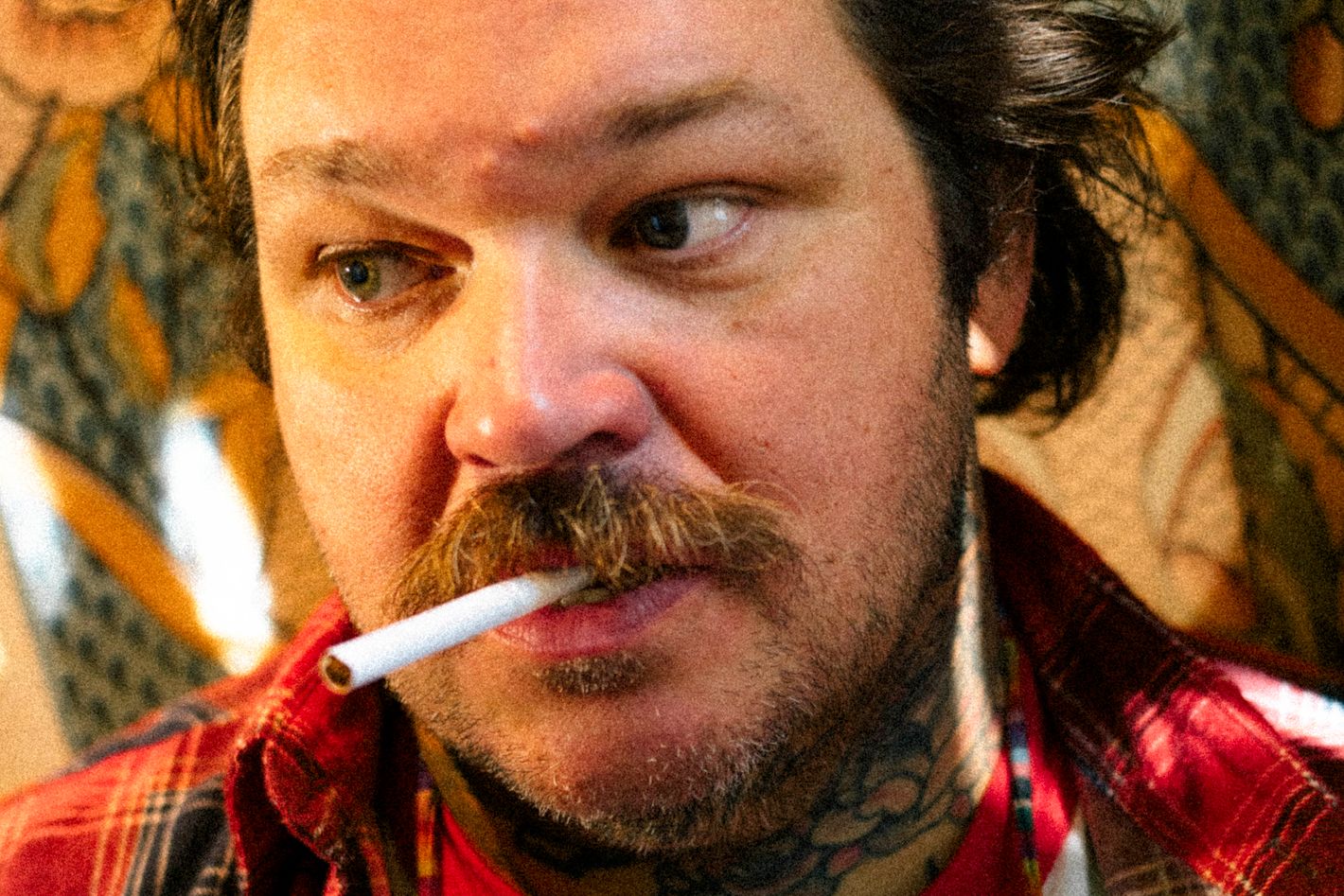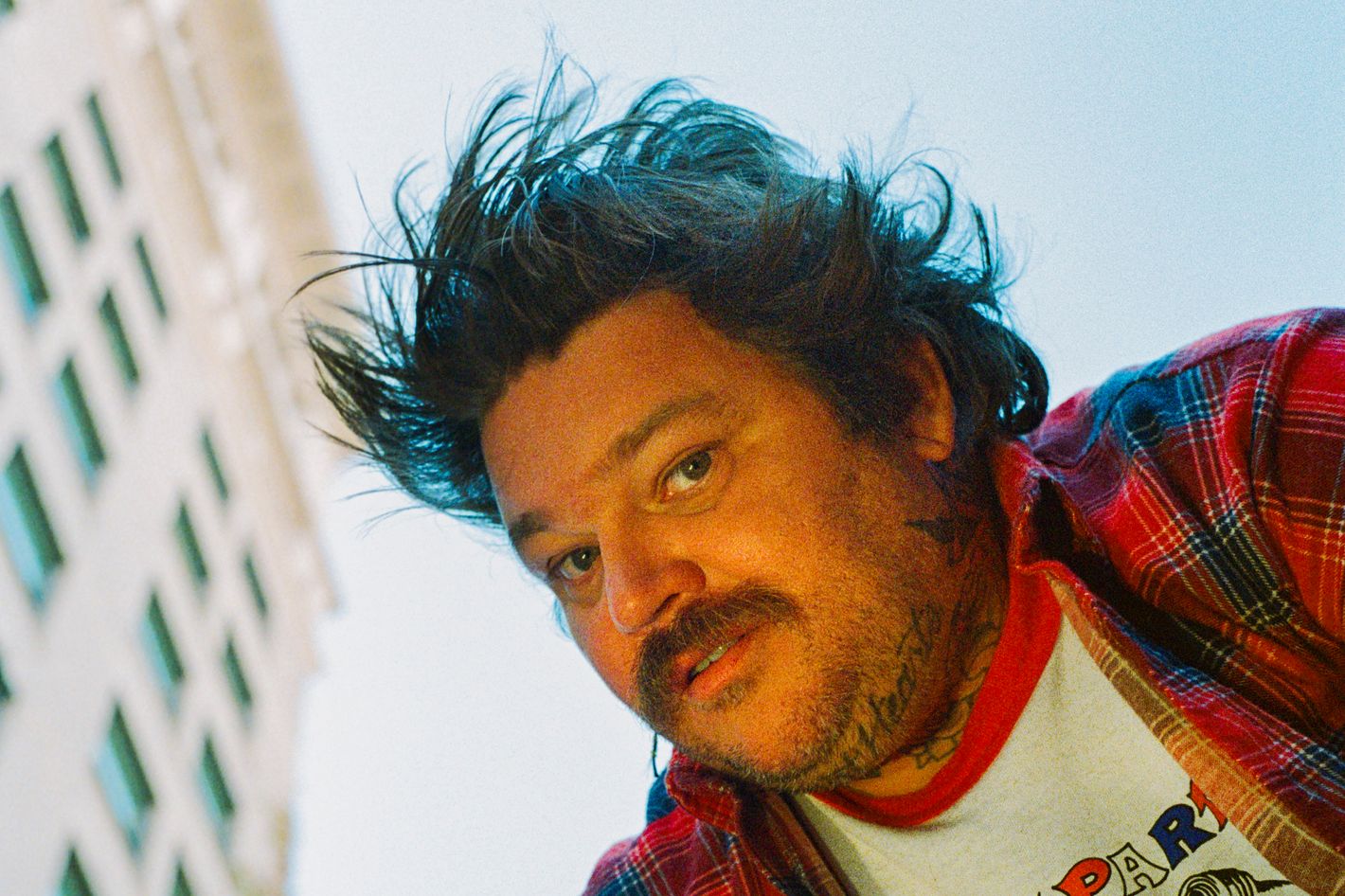when you want, where you want.
Matty Matheson Is Not an Accident
 Photo: Sinna Nasseri
Photo: Sinna Nasseri
“Do you want a deep caramel cup or a milky caramel?” asks Matty Matheson, delicately pouring just the right amount of milk into my dark coffee with his giant tattooed fingers, like the practiced hospitality professional he is. We’re in the lobby café of the hotel where he is staying while in New York, and on this particular morning, the actor (the bumbling handyman Neil Fak in The Bear), author (his new book, Soups, Salads, Sandwiches, is now on sale), YouTube star (1.5 million subscribers and counting), and dining entrepreneur (13 restaurants scattered across Ontario and beyond) is sporting a trademark scruff of beard and an equally trademark, not-quite-large-enough plaid lumberjack shirt, which he says he randomly picked up, like most of his outfits, on eBay. A camo trucker’s hat is propped uneasily on the top of his large, possibly uncombed head and he has a wide-eyed, slightly startled expression on his face that fans of his many hundreds of cooking videos will recognize.
Like more than a few outsize media personalities we’ve encountered over the years, Matheson seems to be expert at projecting a persona of disinterested gonzo dishevelment while leaving a sneaking suspicion that, behind the scenes, the opposite may be true. He is in town for the launch of his latest cookbook, a compendium of two-fisted dishes with names like “Everyone’s Mom’s Macaroni and Tuna Salad” and “Giant Meatball Soup in a Beefy Broth.” Open his YouTube channel and you’ll find a small blizzard of how-to videos that have already been whipped up for the launch, each of them featuring a fake 1-800 number for pre-ordering the book, a catchy jingle sung in a mock falsetto that sounds similar to the voice the author sometimes adopts while cooking up his surprisingly tasty fatso recipes, and a variety of links to products (a cast-iron pan, Matheson Batik table linens, an “M”–embossed butter crock for $40), which anyone can purchase 24 hours a day online at the Matty Matheson store.
Matheson has been doing his popular cooking videos for more than a decade now — “I’ve been making content since before content was ‘content,’” he says — and a working chef in high-caliber kitchens for twice as long, but he explains that standing in front of the camera in a kitchen studio in no way prepared him for the rigors of proper acting on The Bear: “It is by far the scariest and hardest thing for me. My brain is beyond ADHD, so to memorize the lines on top of everything else going on in my life is very stressful,” he says, as we make ourselves comfortable among the café’s leather banquettes. “I think I knew what acting was going to be, but there’s nowhere to hide — I’m not in control. It’s very similar to restaurants, and you need to be prepared. When they say ‘Action!’, that’s service.”
 Photo:
Photo:
 Photo: Sinna Nasseri for New York Magazine
Photo: Sinna Nasseri for New York Magazine
Matheson grew up in a series of small Canadian towns, one of the middle children in a merry, peripatetic family who picked up and moved stakes every few years. He didn’t work in a kitchen until his early 20s, after finishing culinary school — almost. He never did get his diploma, but by the time he was 24 he’d become the chef de cuisine at La Palette, one of the finer bistros in Toronto. He was something of a natural: “I was never good at going to school, and this was the first time I could ever do something that felt easy for me. Oh, if I can debone a quail and make a ballotine, or make chicken-liver pâté, I get good grades? Okay, I like this.”
This was the early aughts, a time when, for better or worse, the back-room kitchen culture burst onto the global stage with all of its warts and excesses. “I have crazy stories from those days, but I don’t have horror stories,” Matheson says. “I’ve been in situations where people lose it, but all of the kitchens I ever worked in were okay.” His favorite books were Anthony Bourdain’s Kitchen Confidential, Daniel Boulud’s Letters to a Young Chef, and Fergus Henderson’s great offal bible, Nose to Tail Eating. His favorite cut of beef was a sizzling hunk of prime rib. His favorite drink was a bottle of Jameson washed down with a case of beer. And his favorite drug was cocaine.
At age 29, after what he describes as years of living as a “high functioning, alcoholic drug addict,” he suffered a heart attack in the middle of the night. He was in the hospital for ten days but didn’t get sober until two years later. “By the end I would get a pint glass, fill it with ice, fill it with vodka, then lime, and I’d make six of those and I’d drink them as quickly as I could,” he remembers. “That was just to get going, and then I’d start drinking beer and whiskey — I would never be drunk during service, but then it became unmanageable and then you start doing it when you say you don’t want to do it.”
 Photo: Sinna Nasseri for New York Magazine
Photo: Sinna Nasseri for New York Magazine
Matheson is in his early 40s now, and the last tattoos he got as a part of his impressive collection were the names of his three young children (ages 8, 6, and 4), one on his shoulder, one behind his neck, and one over his heart. He and his wife, Trish, met in high school and went to prom together, and they live on a farm near Niagara Falls with a spacious double-island kitchen and a large vegetable garden. Despite this “very quiet life,” he also runs those 13 restaurants — an eclectic portfolio that includes several pizza joints in the greater Toronto area, a Vietnamese restaurant, a surf-and-turf fine-dining destination, and Rizzo’s House of Parm, which is named after his daughter: “It’s a dozen restaurants that barely make money. I wouldn’t say it’s an empire. Every restaurant, it’s a small business — you’ve got to serve a lot of cups of coffee to make something, but you’ve got to do it nice every time.” He credits his own ambition and workaholic tendencies to his parents, dad an engineer by trade and mom a restaurant server who still works as a waitress: “She’s like, What am I going to do? Stay at home and look at your father all day? She goes and she makes her tips and she loves it.”
His restaurants all benefit from his massive social-media following, but Matheson himself doesn’t have TikTok on his phone and barely looks at his email anymore, since he maintains a staff of four to handle his ballooning digital obligations. Like every grizzled veteran who reaches a certain level of success, he misses the old Wild West days: “Everyone’s trying to figure out the algorithm of things,” he says. “Everyone has to post what they have to post and everyone’s trying to make the newest, coolest dish. And everyone sees everything and everything has been boiled down to nothing. It’s very homogenized and every restaurant looks the same and everything tastes the same and everything has anchovies.”
 Photo: Sinna Nasseri
Photo: Sinna Nasseri
 Photo: Sinna Nasseri
Photo: Sinna Nasseri
Matheson initially signed onto The Bear because he’d known the show’s creator, Chris Storer, for years, and his sister, the chef Courtney Storer, for even longer. He was first hired as a consultant on the pilot to bring a kind of verisimilitude to the proceedings in Carmy’s kitchen, showing Jeremy Allen White the right way to hold a tasting spoon and pointing out that the kitchen set was too well-appointed for a barebones sandwich shop: “I was the person with Chris being on set, being like, ‘Yo, there’s too many pots and pans. They wouldn’t be able to afford them all. The walk-in needs to be more sparse.”
Storer had always wanted Matheson in the show, but as the handyman, not another chef. “Chris was like, ‘Would you act? Can you act?’ I was like, ‘I don’t know, can I act?’ And he was just like, ‘You can figure it out.’” Nearly everyone on the show (a cast that includes my brother, Oliver) was surprised when it turned into a critical hit. Matheson will start shooting a new season in February, unsure if it’s the end. But he says any newfound TV fame hasn’t fazed him, since he’d been semi-famous for a decade by the time The Bear came around. “People know who I am. That’s not new to me. What’s new to me is people on the street being like, ‘What’s up, Fak?’” he says, rising from the table to head out. “It’s a funny thing. In the restaurant world, I’m the boss, but on The Bear, I’m like a sous-chef. I’m a helper.”
Related
All Rights Reserved. Copyright , Central Coast Communications, Inc.